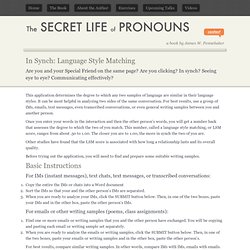

Denene Millner: Cry It Out: The Method That Kills Baby Brain Cells. I know.

A dramatic headline. Made you look. But it's not fiction. It turns out that the "Cry It Out" method of baby sleep training, where you ignore that your kid is screaming, crying and turning 40 shades of purple so that she can break herself out of the habit of being spoiled and cuddled to sleep, does more harm -- way more -- than good. In her recent piece for Psychology Today, Darcia Narvaez, an associate professor of psychology at Notre Dame, writes that when babies are stressed, their bodies release cortisol into their systems -- a toxic hormone that kills brain cells.
"Babies are built to expect the equivalent of an 'external womb' after birth... being held constantly, breastfed on demand, needs met quickly," Narvaez writes. Um, remember that scene from the True Hollywood Stories: Rick James episode on the Dave Chappelle Show -- the one where Rick James is grinding his feet into Eddie Murphy's couch? But I was. That was Daddy, baby! Yeah. How is that about You? Alton Wasson and Aileen Crow talk about Witness Projection.
In one of his semi-annual New York workshops, Alton Wasson, co-director of Contemplative Dance with Daphne Lowell, presented an exercise on projection. (1) Alton and his co-facilitator, Eileen Kelly, divided the group, and asked one half to do Authentic Movement for a half hour while the other half witnessed.

Each witness watched one particular mover in the other group. After moving, the movers briefly spoke about their experience to the witnesses, who stayed silent. While the movers stayed in the original room to further explore their experience using art materials, Alton took the witnesses into a separate room beyond earshot of the movers, so the witnesses could speak about what they had seen.
He then asked the witnesses, “How is what you just shared about you?” Through his gentle posing of the question, he invited the witnesses to consider the possibility that what was “observed” in the mover’s actions was in some way about them—projections of their own memories, desires, concerns. Language Style Matching. This application determines the degree to which any two samples of language are similar in their language styles.

It can be most helpful in analyzing two sides of the same conversation. For best results, use a group of IMs, emails, text messages, even transcribed conversations, or even general writing samples between you and another person. Once you enter your words in the interaction and then the other person’s words, you will get a number back that assesses the degree to which the two of you match. This number, called a language style matching, or LSM score, ranges from about .50 to 1.00. The closer you are to 1.00, the more in synch the two of you are. Other studies have found that the LSM score is associated with how long a relationship lasts and its overall quality. Before trying out the application, you will need to find and prepare some suitable writing samples.
For IMs (instant messages), text chats, text messages, or transcribed conversations: